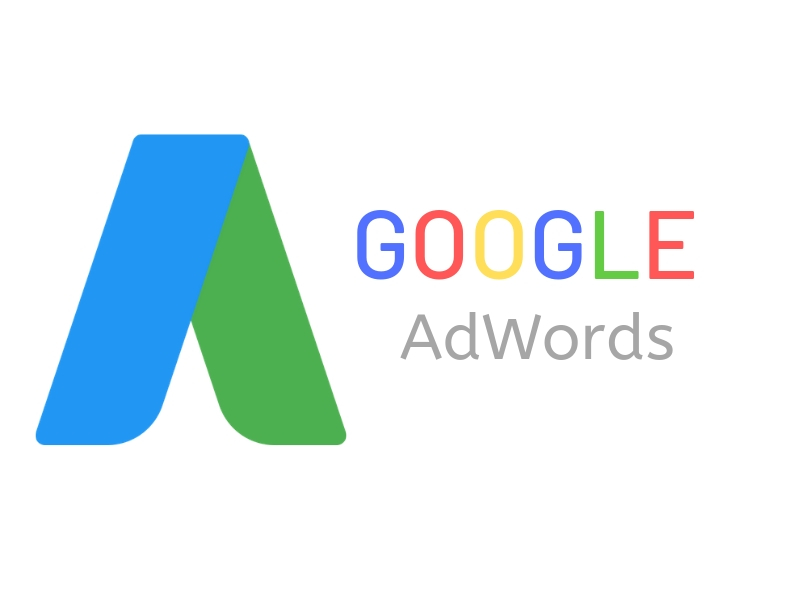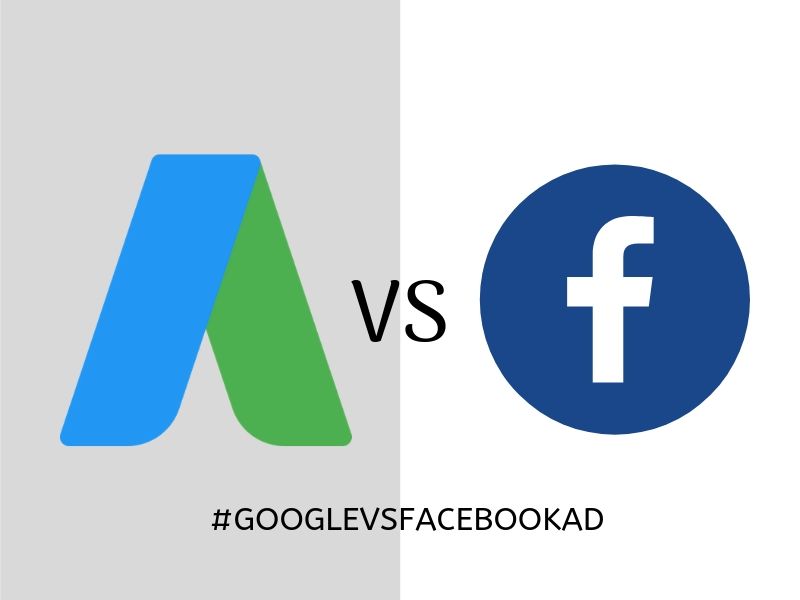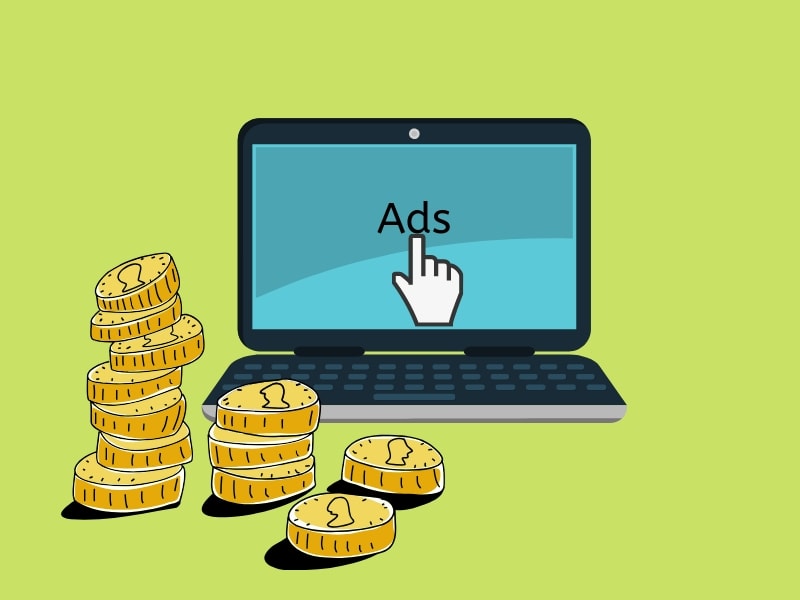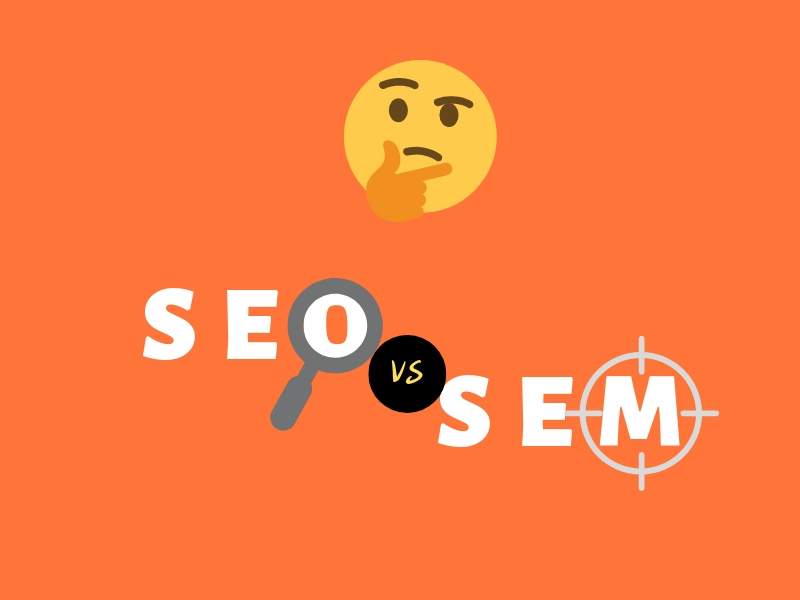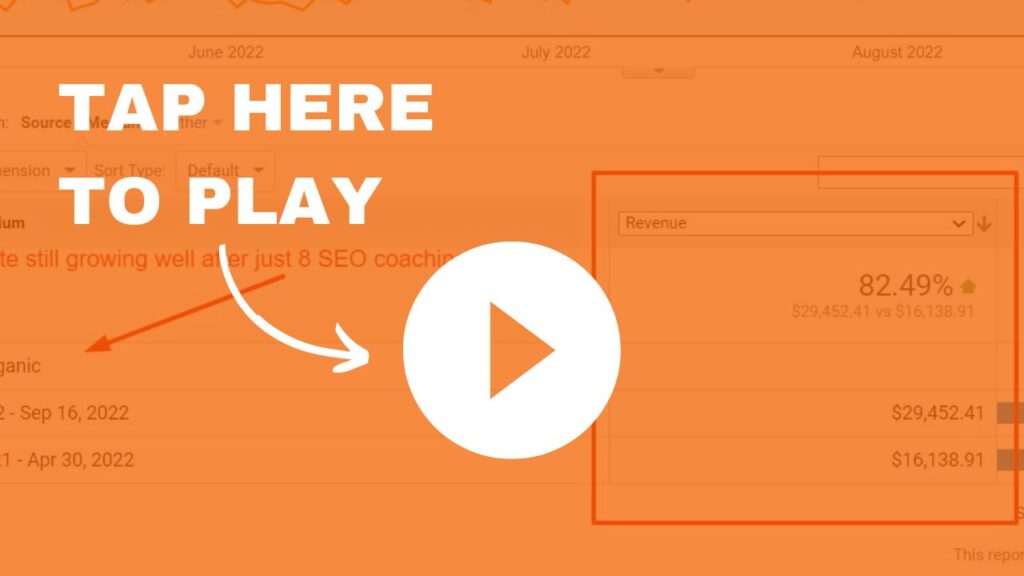SEM (Search Engine Marketing) For Beginners
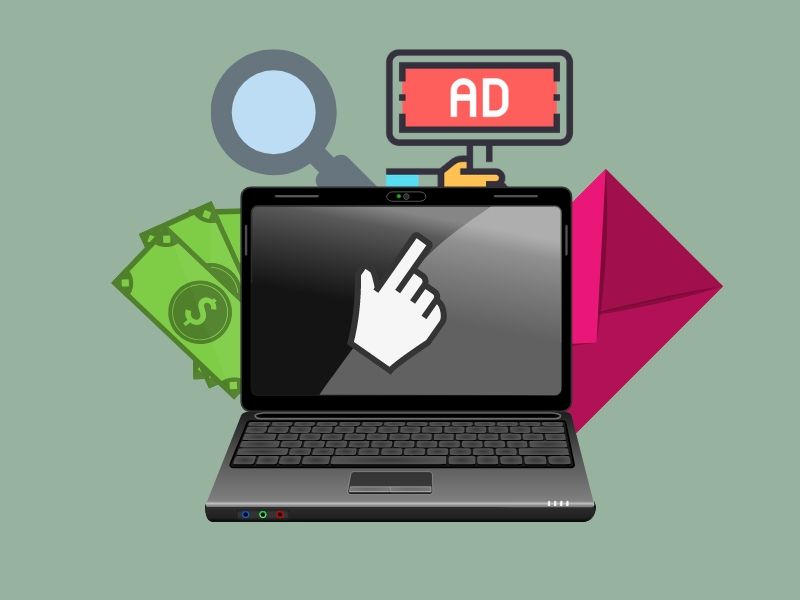
You are reading this article because you may be curious about what is SEM in digital marketing or if not, you must have some basic knowledge or must have heard about it right?
Regardless of whatever the reason is, I am pretty sure you must be looking for an alternative way to boost your business’s visibility in search engines.
To this point, you must have done or learned some basics about SEO or local business SEO for your business.
But what is happening? Your SEO is not showing the result? Or it is simply taking too much time.
Sure, SEO will definitely reward you, all you need is time and effort. But in business, sometimes you cannot wait for that long. So all you need is a little boost.
In this SEM guide for beginners, you will learn everything you need to know about it.
Important Terms
Before diving into the details, let’s first understand some important terminologies, so you won’t confuse later on in the article.
1. Advertising Network
Networks where ads can be placed by advertisers and displayed on different websites via a contract with the company whose ads are being placed. The revenue generated by the company via those Ads is shared with the Network
2. Click-Through Rate (CTR)
The rate at which the users click your ads. It’s calculated by dividing the total number of clicks with the total number of ad impressions.
3. Ad Impressions
The number of times your ads get displayed on search engines when users type in the keywords associated with your targeted keywords. Impressions don’t necessarily mean that the users have seen your ads.
4. Keywords
Words or phrases that a user enters into a search engine so Search Engine can return the matching and relevant results.
5. Campaign
Campaign or ad campaign is a series of advertisement messages that share a single idea and theme. It basically defines your ad objective and is at the highest hierarchy or level in advertising.
6. Quality Score
A score that Search Engines give a site or Ad by measuring click-through rate, landing page, keyword performance, and other important factors.
A higher quality score means you can pay lesser than your competitors for the ads while keeping the ad display position the same.
Definition
SEM stands for Search Engine Marketing. SEM involves earning search visibility through paid advertising on search engines such as Google.
The 3 types of search engine advertising are Pay-Per-Click (PPC), Pay Per Impression (PPI) or also known as Cost Per Mille (CPM) and Pay Per Sale or Action (PPS/PPA) programs.
The most famous one being PPC. If you want to learn more, check out my article on PPC marketing guide.
What PPC Advertising?
Pay-Per-Click advertisement or PPC is a type of internet marketing in which advertisers pay a fee each time one of their ads is clicked in order to visit the websites or landing pages.
The cost for advertisement varies, depend on the cost for each keyword, advertisers are willing to pay for it.
This strategy is effective as you do not have to worry about getting charged if no one visits your website. This is thus, termed as a revolution in advertising and has become popular in today’s world of advertisement.
Platforms
SEM platforms are search engines where a brand can place search ads that are displayed when users perform a search. The most common SEM platforms are Google and Bing.
- Google Ads is the most widely used platform. Billions of Google searches are performed a day, so it can help you get in front of the largest online audience.
- Bing Ads claims to connect with 3 million searchers that Google can’t reach. By serving ads on partner sites such as Yahoo and MSN, Bing Ads help you connect with searchers who aren’t exclusively using Google for search.
New to Google Ads? Check out my Google AdWords Basics tutorial for beginners.
Types Of Keywords
SEM keywords are the terms and phrases that you target in your search engine marketing campaigns. When users search for those keywords, they see your ads.
For example, if your campaign targets the term “SEM Agency,” your ad may show when a user searches for that phrase.
There are 4 main types of SEM keywords you can use in your advertising campaign, i.e. broad match keywords, phrase match keywords, exact match keywords, and negative keywords.
1. Broad match keywords
Target variations of a term. This includes similar phrases, singular or plural forms, misspellings, or synonyms of the target term.
For example, when targeting the broad match keyword SEM Agency, a campaign may also target SEM Agency, Internet Marketing Agency, and Digital Marketing Agency.
2. Phrase match keywords
Target the exact phrase, plus any phrases that have words that come before or after the target keyword.
For example, when targeting the phrase match keyword SEM Agency, a campaign may also target the best SEM Agency, professional SEM Agency, and hire an SEM Agency.
3. Exact match keywords
Target the words that are very closely related to the target term. This includes misspellings, singular or plural forms, abbreviations, reordered words, paraphrases, or closely related words with the same search intent of the exact match term.
For example, when targeting the exact match keyword SEM Agency, a campaign may also target SEM Agency, SEM Agencies, and SEM Company.
4. Negative keywords
Exclude terms that you don’t want to target. Negative keywords are variations of broad match, phrase match, and exact match keywords that you don’t want to use in your campaign.
These terms may be semantically related to your keywords but unrelated to the search intent of the target term, your campaign, or ad copy.
Examples of negative keywords for the target term SEM Agency may include SEM Agency job or SEM Agency training, which contradicts your actual intent to actually looking for SEM Agency to hire, not information.
How Does It Work?
In general, SEM works in the 4 following steps:
1. Campaign Creation
The first and foremost step is to determine and create your ad campaign. This allows you to basically target your objective at the highest level in the hierarchy.
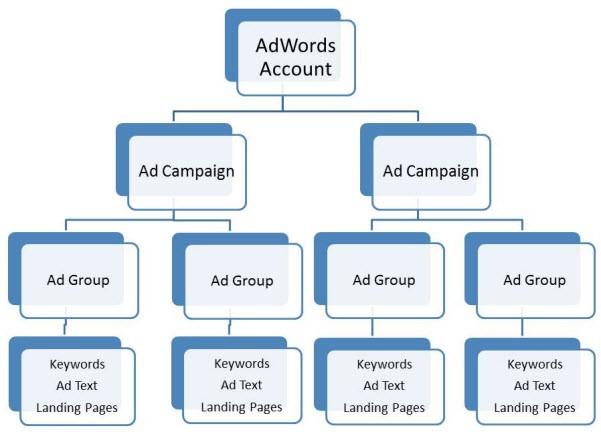
This also includes selecting your bidding strategies, defining your daily budget, target your ads on specific locations and timing, scheduling your ads, etc.
2. Keywords Bidding and Display
After you have your campaign set up, next is to determine the keywords you want to go after. This requires a process of keyword research and analysis.
When doing keyword research, knowing the search intent, CPC and volume are essential to winning the SEM advertising campaign.
Once you have the keywords you’re targeting, you have to then bid for them against your competitors in order to win the ad’s display on the search engines – similar to auctions.
3. Ads Creation
Now you have your keywords and set up your goal. It’s time to create the actual ads that will be displayed on search engines.
This involves writing ad headlines, descriptions and additional features like site links, contact information, Call-To-Action (CTA) button, etc.
4. Monitoring And Optimization
After you have everything set up, you just can’t leave it like that. You need to continuously monitor your ad performance and optimize them as time passes.
This is to ensure maximum ads conversion and ROI. For instance, modifying and tweaking your ad headlines and descriptions can potentially increase the CTR.
This is also to make sure that you don’t overspend your budget and let the ad system runs out of control.
How Is It Compared To SEO?
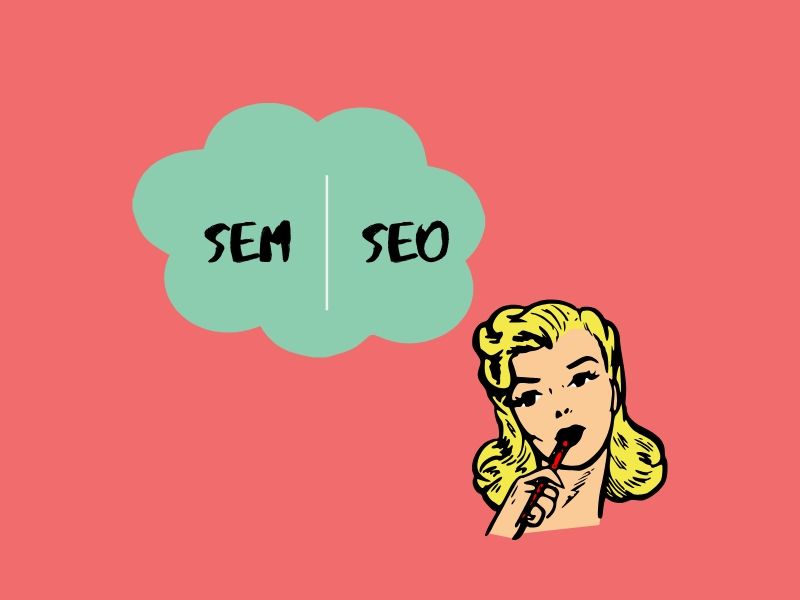
In the world of digital marketing, SEO can be considered as a subset of SEM.
This is because both are a type of marketing involving search engines’ visibility, however, they should never be used interchangeably.
This is because both focus on a different area and the strategies required are different. SEO focuses on getting traffic through organic search. This involves heavily on the website’s authority.
Now, it generally takes time to build the site’s authority and trust. Consistency of putting out great content, link building, and audiences’ trust is the main key to SEO.
Other than that, there are literally 200 Google ranking factors that Google takes into consideration when ranking web pages for a particular searched term.
Search Engine Marketing, on the other hand, requires way little effort and time. All you need is enough money and a bit of strategy to really rank high and compete with your competitors.
When it comes to SEM, really the two factors which you should take into considerations are how much you are willing to bid for a particular searched term or keywords and how good and catchy your ads campaign is, to compel people enough to click on it.
To learn more, you can read my article on SEO vs SEM, where I dive deeper into the comparison between the two.
Compared To Social Media Advertising
Often times, people can be confused between advertisements shown on certain social media like Facebook ads and SEM ads, Google AdWords for example.
This is because the way they are displayed to users is very similar, however, they are different.
Social media advertising displays ads to the users based on data they have accumulated over time.
For example, in Facebook ads, you can target ads on people based on several factors beyond basic information like locations, ages, and genders, which Search Engine Marketing ads can also do.
This includes things like their interests, preferences, online time, buying behaviors, etc.
SEM, on the other hand, relies on keyword phrases to target people when they’re performing searches in places like Google.
But besides their differences and the way they function, they can work together very effectively to increase brand awareness and sales by utilizing their unique strengths.
Let me explain this. Social media advertisements are great to target a specific type of prospects to increase the chances of conversion but the downside is the ads usually appear for a limited amount of time.
To compensate for that loss, SEM ads can appear on searched results for a longer period of time and by appearing on search engines, the likelihood of getting converted is higher.
So by combining them both, you can literally boost your conversions based on specificity and relevance.
For more information, check out my Google AdWords vs Facebook Ads for in-depth details.
Benefits

1. Create instant brand awareness
In almost all of my articles on SEO, I clearly stated that SEO is the most powerful strategy in digital marketing, not because it drives traffic, but it drives quality traffic.
However, as everyone knows, it generally takes lots of time and effort for SEO to start kicking in and showing results. Many brands and businesses cannot wait for that long, and that is when SEM comes into play.
Take Google ads for example. The moment you launch the ad campaign, your ads either will appear on the top or bottom of Google page one search results, which is impossible (unless your site has a very strong authority) for any web page to appear after creating content on a particular keyword using SEO.
2. Reaches people in the right place and time
Because of its ability to specify the location and demographics, SEM ads are such a powerful tool to target and reach out to your ideal type of prospects.
It is true that more than 93% of people are on the internet, but not every one of them has an interest in your particular products or services.
Certain other criteria such as location also influence businesses.
When you use SEO, you have no control as to which location or type of people you want to display certain pieces of information. This purely depends on the search engine’s algorithm.
I had a client where he wanted to rank a specific page to people when people search for a specific query, but this did not happen. Instead, a similar page showed up. This problem can be easily solved if you run ads.
3. Generate instant revenues
With the right tactics and strategies, you can easily generate instant revenues when going for ads.
With the above two advantages of SEM, you can almost guarantee that you will be able to generate instant cash flow.
But you have to be cautious of how to set budget, run ads or display it.
To help you out, I have laid out some points to keep in mind while running for the ads later in this article. So keep on reading.
4. Directly And Indirectly, Helps SEO In The Long Run
The way SEM advertisement helps SEO in the long run indirectly does not really surprise me but, however, how it helped SEO directly is what really kept me intrigued.
Let me explain how this helps SEO indirectly first. In some of my articles, I advised you to go for PPC ads as an initial boost for your website if it is new.
This will not only create business awareness but also some initial revenue.
Side by side, you should also do SEO as a preparation for the consequence after you stop the ads ( I have highlighted some disadvantages of SEM ads later on in the article ).
Now, after you stop the ads, you can utilize the information received by the statistics collected by the ads platform to create content and monetize your site – Nothing uncommon right?
But what really strange is how this directly impact the ranking of your site after you stop the ads.
Last month, I had a client where he wanted to rank for a particular keyword in his niche. After going through the competitors’ website on the first page, I came across a site, with a PA of 3 and a DA of 1.
On further analysis, I found out that this site does not have even have a single backlink to it. But it is able to stand out from the high PA’s and DA’s site, sitting comfortably on the third position on the front page.
The site does not have that much great content or anything fancy. Everything seemed to be just fine.
But upon hearing from my client that this site used to have a successful Google ads campaign, with high click-through rates, this really kept me thinking – Could this really help SEO?
I went on and had a discussion with my fellow SEO experts and the result was similar.
So this can really conclude that if your ad campaign is successful and people are engaging with your content, this can help SEO.
Effective Ways To Do It

1. Research about your customers
I cannot stress this enough on how is it important to do some research on your ideal prospects or customers.
You can use any type of data collected, either from your past traffic, offline purchases, etc. At least you should have some basic knowledge of your prospects.
You should also be aware of how they use search engines mainly for. This is known as search intent.
There are 3 top reasons people use search engines for:
- Research — A person may want to learn about a brand, product or service. They may be researching the solution to a problem. Reach people with SEM when they’re doing research. Help them make a smart decision.
- Entertainment — The Internet is a plethora of things to do. Some are looking for videos. Others are looking for games. Many are entertained by new stories. Others like financial calculators. Others want to learn something new. Think about what kind of entertainment your target is looking for. Relate it back to your brand. That’s a great way to use SEM to connect.
- Buy Something — They go onto Google with the intention of buying something. These are people that can often be convinced to buy right now. Make them a compelling offer in your ad.
Without knowing the search intent of your prospects, you will end up losing money by having ads that people may click on and instantly leave the site because they cannot find what they are searching for.
2. Set a budget
Besides the money you have to spend on the ads campaign, you also have to pay for other things as well such as
- Writing good copy
- Doing research
- Site development and improvement
- Analytics
If you do not set a budget, you will overspend and forget that there are other small things that you should take into considerations while running SEM ads.
3. Set clear goals
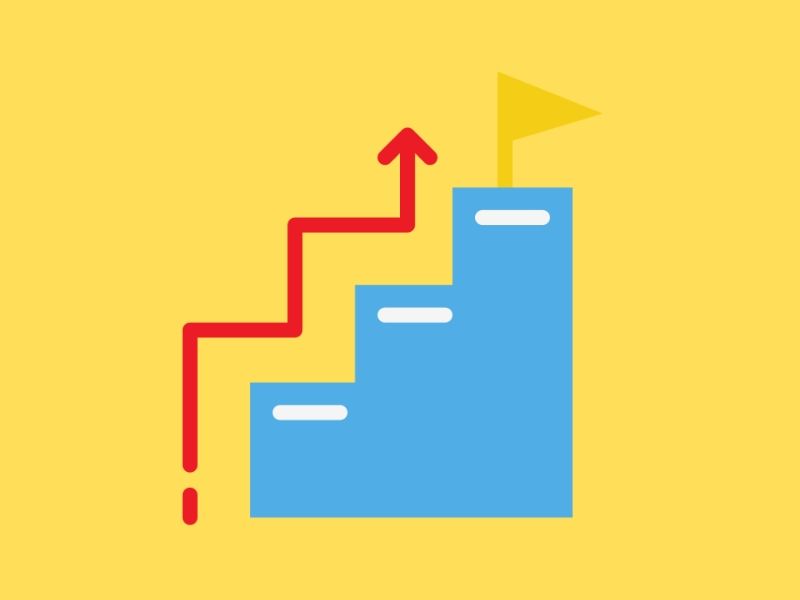
Without a goal can get you to nowhere in internet marketing. You have to have a clear goal even before you start the campaign.
Basically, the ultimate goal is to make money and profit. But before reaching that, there are multiple small step or goal which you have to accomplish.
For example: getting a certain amount of visitors per month.
That is where the next step comes into play.
4. Start small, monitor and scale
For any business, you should always start small. Investing a lot of money into ads in one go is not a smart option.
What you should do is to start small. You may start by targeting a very specific location of people or demographic. Collect enough data and see what you have to make a change or improve.
The good part about SEM ads is it is very easy to scale. You can always do this by changing your ads campaign – adjusting the amount of money you put in.
Collect junks of data over a period of time. See what works and what does not. Experiment with it until you are able to find that sweet spot or type of content that your audiences love, then you can go all in.
5. Keywords research
Another really important thing to consider when running SEM ads. This process does not only gives you the idea of what people are typing in the search engines to find the type of your business but also the cost of each keyword.
If you are running Google ads, there is a built-in tool called Google keyword planner, which gives you every information related to keywords such as the search volume, related keywords, keywords competition, cost per click, etc.
If you are able to master this process, I guarantee, you will be able to put out ads in front of a large number of audiences with relevancy, and with a bit of copywriting strategies, you will be able to generate more leads than you could ever imagine.
6. Create an effective high conversion landing page
So the audiences click on your ads, now what is next? A landing page of course.
A landing page is a standalone web page, created specifically for the purposes of a marketing or advertising campaign. It’s where a visitor “lands” when they have clicked on an ads.
A landing page is used to continue the message written in the ads. For example, if your ad offers a free downloadable PDF, you should immediately provide that after the user lands on your page.
The landing page is not typically a page to do lots of sales but rather to create that kind of trust and awareness of your brand.
You may have a place for an email subscription as an opt-in option. But remember, focus on building trust at this point.
When people ask me, what to put on the landing page, I simply say anything that you are able to get the prospect’s email address in exchange.
This is because nothing is as powerful as email marketing and once you get this right, you will be able to generate lots of sales in the process.
7. Re-marketing
The process of remarketing simply means you “re-target” your audiences based on their specific interests.
Let’s say you operate an e-commerce business that sells kitchen supplies. You might create a “toaster” remarketing audience based on people who visit the pages of your site where you sell toasters.
That way, you can show these specific visitors highly targeted display ads that market your toasters.
You already know they are in-market for toasters, and now you can draw them back, perhaps with a special offer like “free shipping.”
The way you re-target is by using some snippets of codes or cookies you embed on your site. You can also use information gathered from the advertising platform or Google analytics.
Disadvantages

1. Can sometimes be expensive
As mentioned above, when running SEM ads, you have to bid for keywords. Sometimes keywords in a particular niche can be very expensive. It can go as high as $15 per click as a based price.
Apart from that, you would also have to outbid your competitors, so you would want to bid more than that.
If you are not careful when selecting keywords (through extensive keywords research), you can end up losing lots of money this way.
Another reason you have to spend a lot is keywords competitions. The more competitive your market is, the higher the bid you have to place, thus end up spending lots of money.
2. Can be challenging if used to create trust
SEO is the best way you can create trust among your audiences. This is because they are willing to click on it without getting distracted by ads or sometimes feel compelled to do so.
True, some platform like Google ads have an ad system in place and the way they display ads are beautifully integrated into searched results.
But oftentimes, the mentality of people when they see ads still exist.
This could possibly be that they used to click on them and did not get the required answers or that they have a negative mindset towards ads in general.
3. May result in a sudden drop in website ranking
This can happen if your site or page does not have proper SEO in place. This is why many sources refer to SEO as a subset of SEM.
For Search Engine Marketing to be effective in the long term, you need to do SEO. Once you stop ads campaign (which I believe everyone will do when it comes to a certain point), you should have that kind of backup as your search result’s ranking will initially face the initial drop.
But with SEO, you can make sure that your site or page can still effectively rank for that particular keyword, even if you completely or partially stop the ad campaign.
The sudden drop in ranking can result in a sudden loss of traffic and revenues as well. So make sure you are prepared for that.
Conclusion
That is all for the complete guide to SEM for beginners.
Remember, this digital marketing strategy can really prove to be effective if you need that initial momentum for your business.
As always, I would still suggest you do SEO side by side. You cannot run ads forever, and that is why you need a proper backup.
Cost and strategies are also two things that you should take into considerations when it comes to SEM. Make sure you plan ahead, set a clear goal and implement the campaign strategically.
In 2023, I cannot emphasis enough on how important SEM is.
Not because SEO has lost it’s important but because more and more competitions are rising and that all major search engines platform like Google and Bing are pushing hard for ads, as it’s their major channel to make money.
So the final question is, is SEO enough for 2023? I would certainly say no. But a mix of both can definitely help you beat your competitors in an effective manner. (time and instant awareness).

